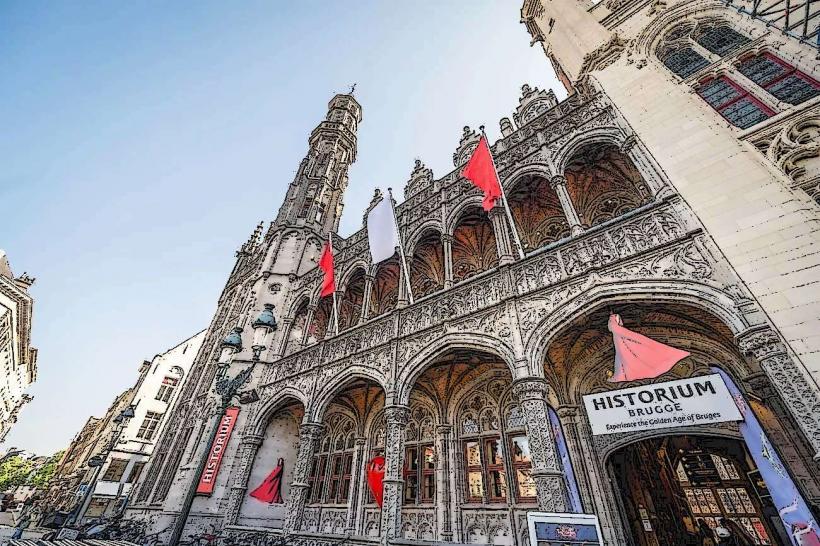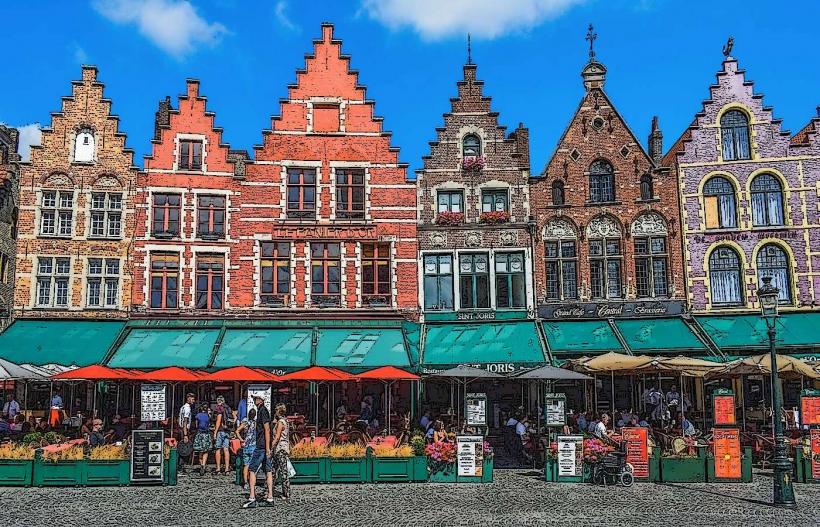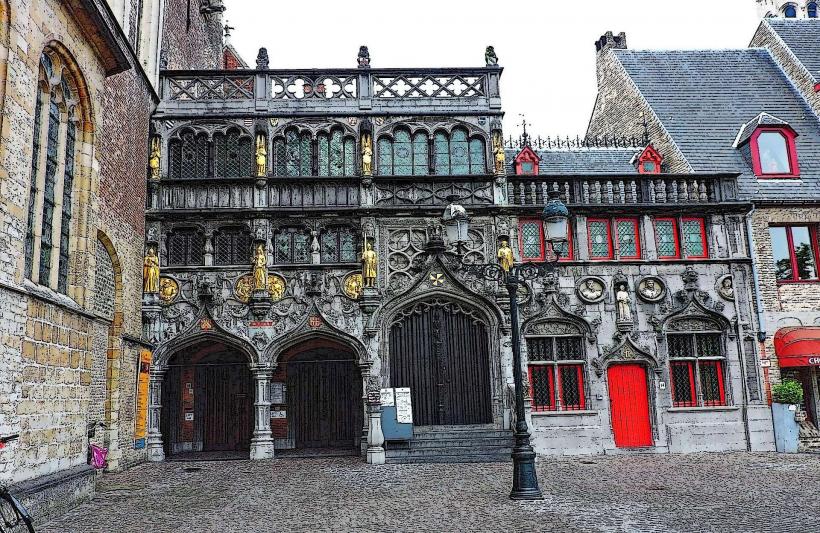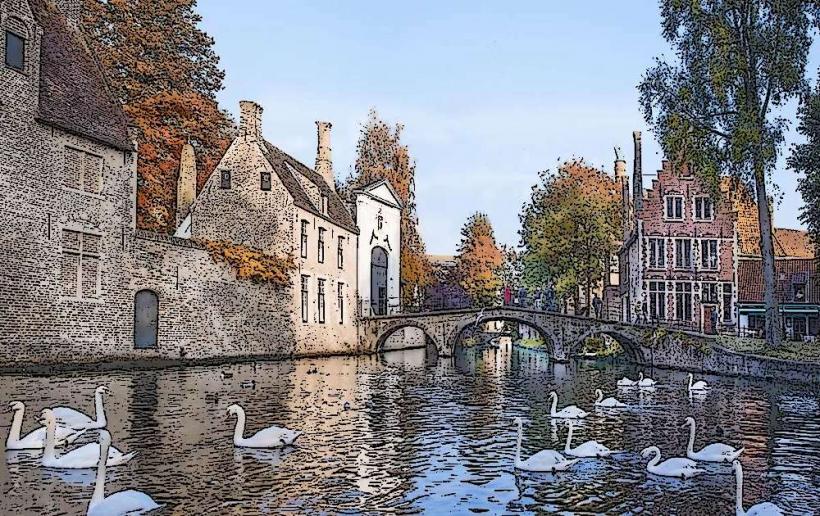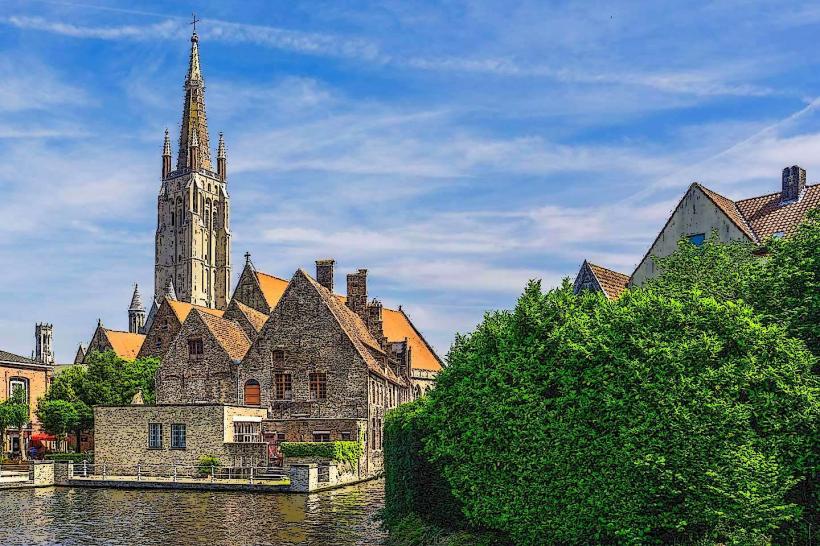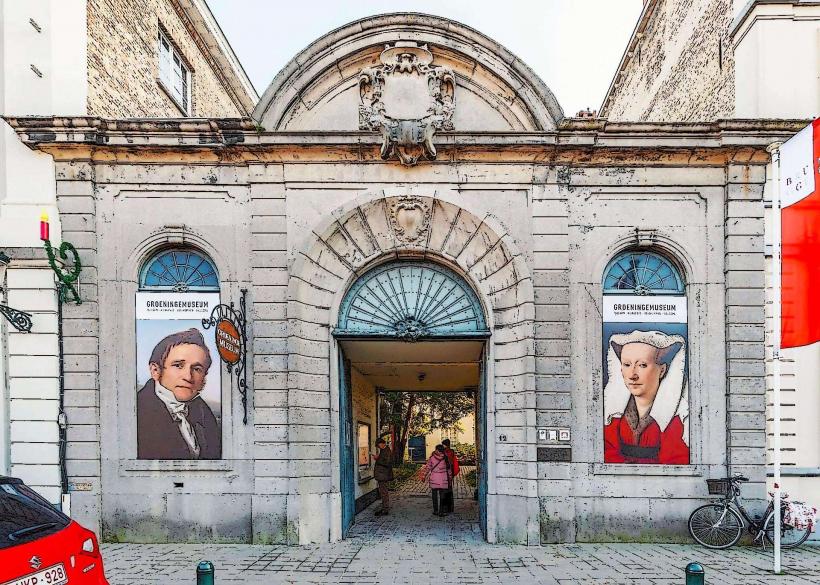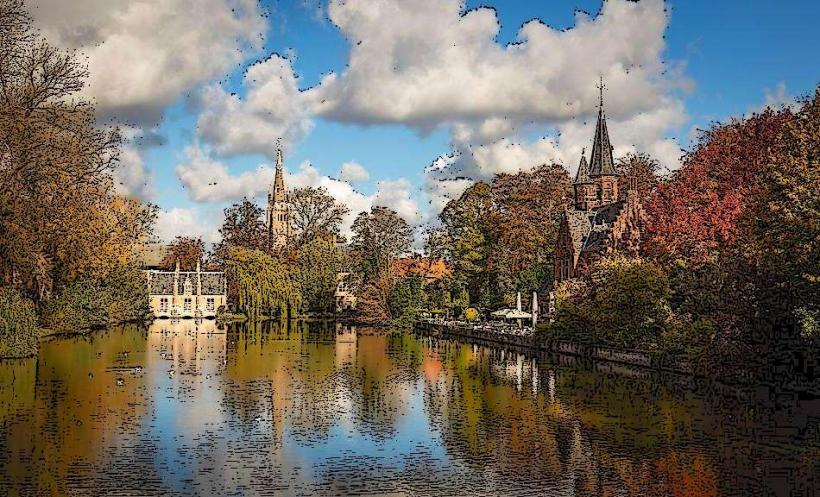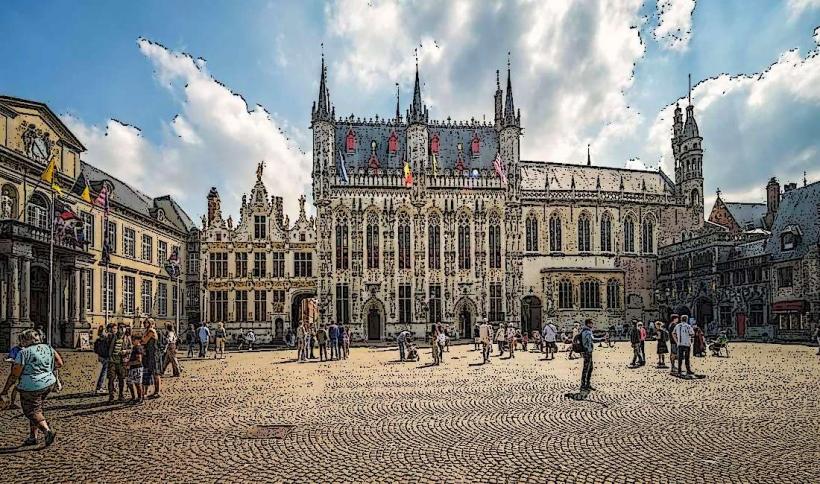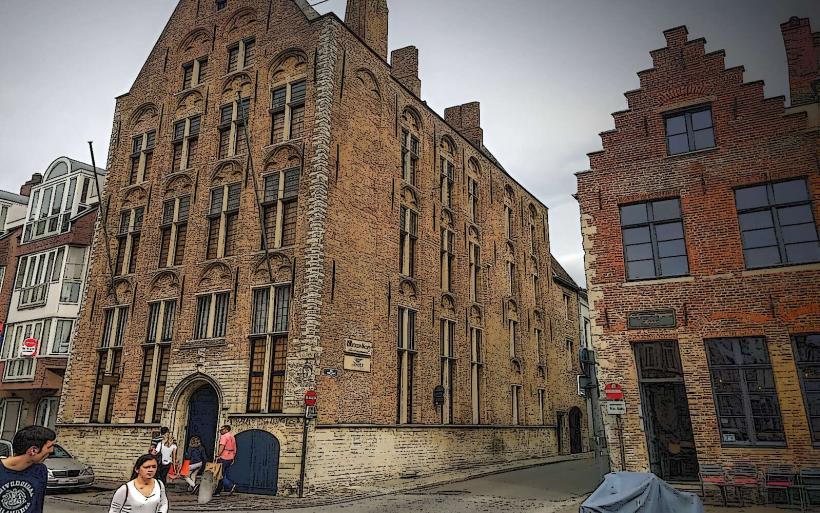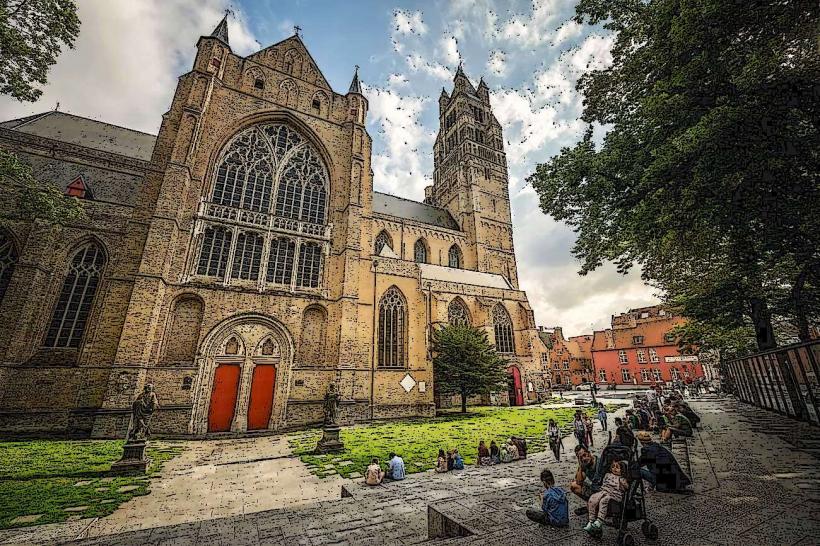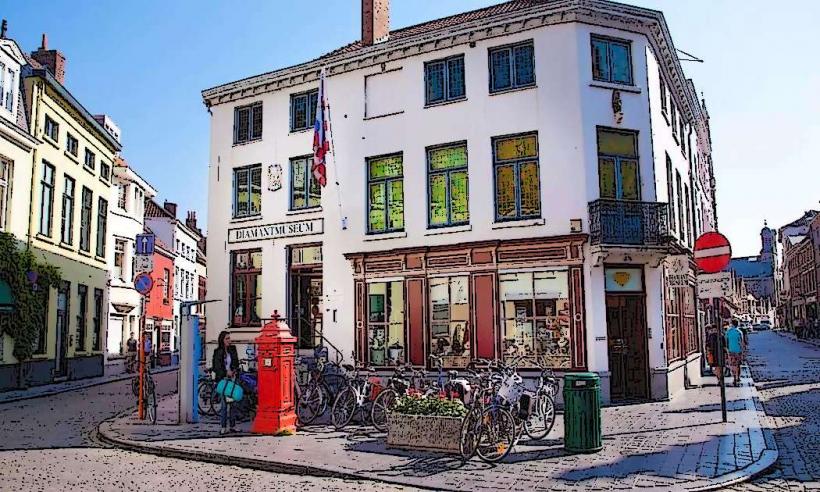Information
Landmark: The Old St. John's HospitalCity: Bruges
Country: Belgium
Continent: Europe
The Old St. John's Hospital (Dutch: Oud Sint-Jan) is one of the oldest and most historically significant buildings in Bruges, Belgium. Located in the city center, this medieval hospital complex dates back to the 12th century and has played a key role in the city's medical and religious history. Today, the hospital is home to a museum that showcases its rich history, along with art collections and exhibits on the development of healthcare in Bruges.
History and Significance
Foundation and Early History:
- The Old St. John's Hospital was founded in 1188 by the Brothers of the Holy Spirit (a religious order) to care for the sick, particularly poor pilgrims who traveled to Bruges. During the medieval period, Bruges was a major trade and pilgrimage center, and the hospital became an essential institution for the city's inhabitants and visitors alike.
- The hospital was not only a place of medical care but also a religious center. Patients would receive treatment and care while also participating in religious services and prayers for healing.
Medieval Architecture:
- The hospital complex is an outstanding example of medieval architecture, particularly the Gothic style that was common in Bruges during the Middle Ages. The hospital is built around a central courtyard, with several buildings that were added over the centuries as the institution grew and evolved.
- The chapel of St. John, which is part of the hospital complex, is particularly noteworthy for its Gothic architecture and its decorative features.
Role in Healthcare:
- For centuries, the Old St. John's Hospital was one of the most important healthcare institutions in Bruges. It cared for the sick, elderly, and poor, and its medical practices were an important part of the city's efforts to deal with diseases and epidemics.
- The hospital also served as a pilgrim’s refuge and was an essential part of Bruges' social welfare system during the medieval period.
Decline and Transformation:
- The hospital continued to function as a place of care until the early 20th century. As medical practices evolved and new, more modern hospitals were built, the Old St. John’s Hospital gradually became outdated.
- In the mid-20th century, the hospital closed its doors as a medical institution, and the complex was repurposed to house the Hospital Museum, which opened to the public in the 1970s. This transformation helped preserve the historical building and its collections for future generations.
Key Features and Highlights
Hospital Museum:
- Today, the Old St. John’s Hospital is primarily a museum, and it is part of the Musea Brugge collection. The museum offers a fascinating glimpse into the history of healthcare and the role of hospitals in medieval Europe.
- Exhibits cover a wide range of topics, including medieval medical tools, the history of the hospital, and the evolution of healthcare in Bruges. The museum also explores the social and religious context of the hospital, highlighting its role in caring for the poor and sick.
The Chapel of St. John:
- The Chapel of St. John is one of the most impressive features of the Old St. John’s Hospital. Built in the 14th century, the chapel is a beautiful example of Gothic architecture with its vaulted ceilings, ornate stained glass, and sculptural details.
- The chapel was used not only for religious services but also as a place of healing and prayer for the hospital’s patients. Its peaceful atmosphere makes it a highlight of any visit to the Old St. John’s Hospital.
Art Collection:
- The museum’s collection includes several notable works of art, including pieces from the Flemish Primitives, one of the most famous art movements in medieval Europe. Among the treasures housed in the museum is a triptych by the artist Hans Memling—one of the most renowned Flemish painters of the 15th century.
- The Hans Memling Museum is also part of the Old St. John’s Hospital complex, and it features a remarkable collection of paintings, altarpieces, and religious art from the Flemish Renaissance. Memling’s art played a key role in shaping Bruges as a center of Renaissance art during the 15th century.
Medieval Medical Equipment:
- The museum displays an extensive collection of medieval medical instruments, including surgical tools, apothecary jars, and other artifacts used in the treatment of patients during the medieval period. Visitors can see how early doctors and nurses cared for the sick and treated various ailments, using primitive yet fascinating tools.
- These exhibits give insight into the challenges faced by healthcare professionals during the Middle Ages, as well as the development of medicine over time.
Historic Courtyard and Architecture:
- The courtyard of the Old St. John’s Hospital is another beautiful feature. Surrounded by historic buildings with arched doorways and gothic windows, the courtyard provides a peaceful and atmospheric space to explore.
- The architecture of the hospital complex is a mix of medieval, Gothic, and Renaissance styles, reflecting the building’s long history and the changes it underwent over the centuries.
The Old Hospital Rooms:
- In addition to the museum exhibits, visitors can tour the original hospital rooms. These rooms have been preserved to show how patients were once treated, with many original features intact, including stone floors, wooden beams, and simple furnishings.
- These rooms provide a fascinating look into the daily life of both the hospital’s patients and the medical staff who worked there.
Hans Memling Museum:
- Located in the Old St. John’s Hospital, the Hans Memling Museum is dedicated to the works of the Flemish painter Hans Memling, who was active in Bruges during the 15th century.
- The museum showcases several of Memling’s masterpieces, including the “Last Judgment Triptych” and other religious works. His art is considered some of the finest examples of Flemish Gothic art, and the museum is a must-visit for art lovers.
Visitor Experience
Visiting Hours: The Old St. John's Hospital is open to the public daily, typically from 9:30 AM to 5:00 PM. However, hours may vary depending on the season or special events, so it is always best to check ahead.
Admission: There is an admission fee to visit the museum. Tickets are usually available at the entrance, and discounts may be available for students, seniors, and groups. The museum is included in the Musea Brugge ticket, which offers access to several other museums and attractions in the city.
Atmosphere: The Old St. John’s Hospital provides a quiet and informative atmosphere, making it a perfect place to learn about Bruges' history and the development of medicine. Its medieval architecture and art collections provide a unique and enriching experience for visitors of all ages.
Nearby Attractions
- Basilica of the Holy Blood: Located just a short walk away, this medieval church houses a venerated relic believed to contain drops of Christ's blood.
- Markt Square: The heart of Bruges, with its Belfry Tower and several historic buildings.
- Minnewater: Known as the Lake of Love, this picturesque lake is a serene spot near the Old St. John’s Hospital.
- Groeningemuseum: A short walk away, this museum is home to a vast collection of Flemish art, including works from the Flemish Primitives and Renaissance periods.
Conclusion
The Old St. John’s Hospital is one of Bruges’ most fascinating historical sites, offering a unique look at the medieval healthcare system, as well as a deep dive into the city’s art and cultural history. Whether you’re interested in the evolution of medicine, Flemish Renaissance art, or simply exploring a beautifully preserved medieval complex, the Old St. John’s Hospital provides a compelling and educational experience for visitors to Bruges.

